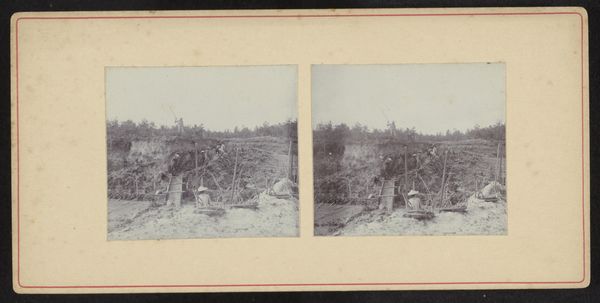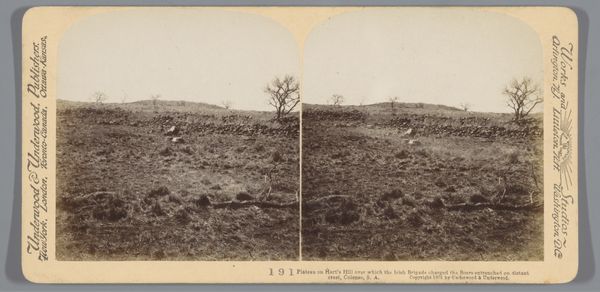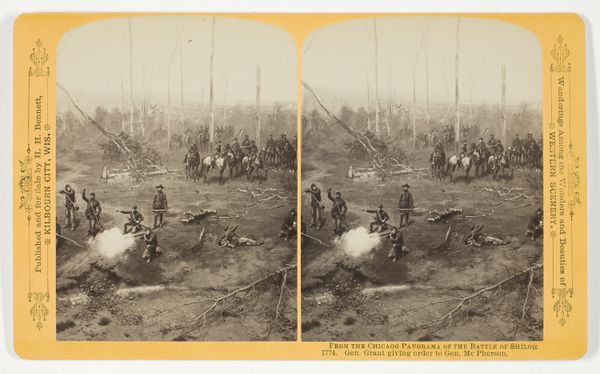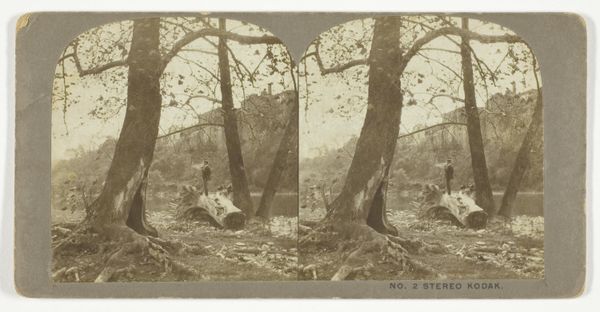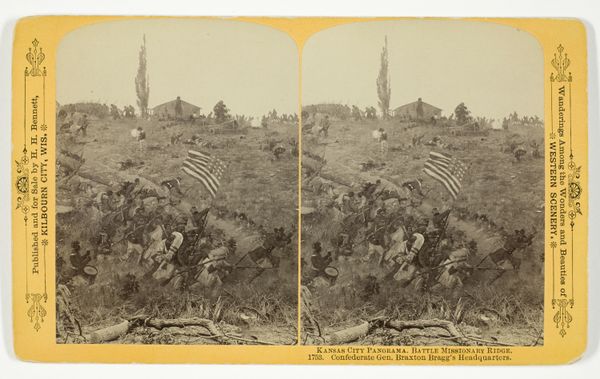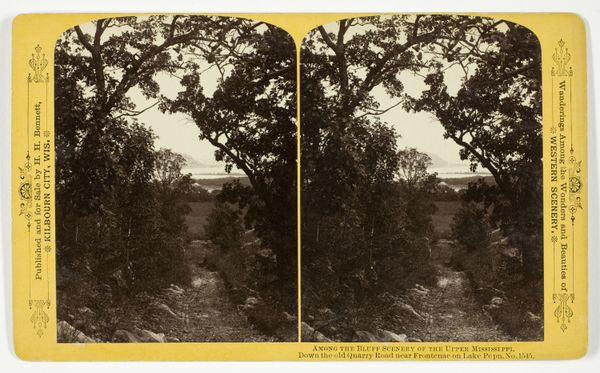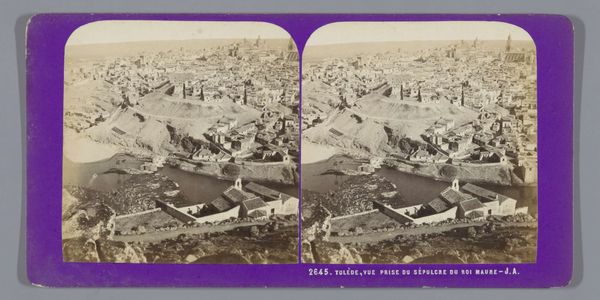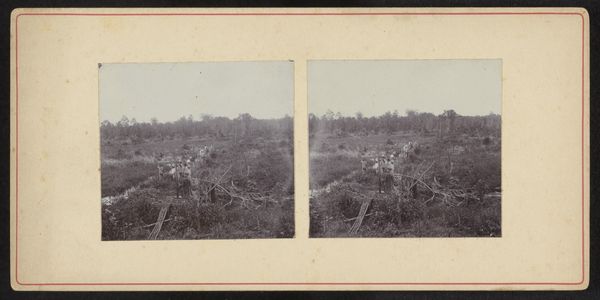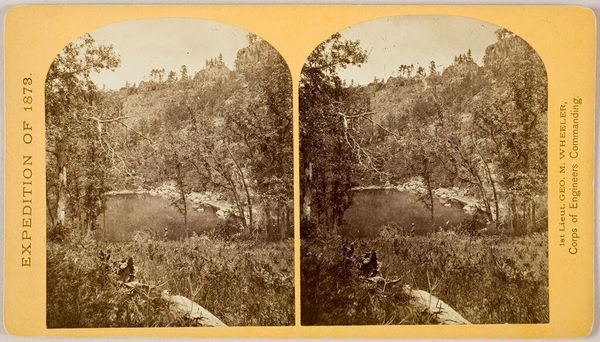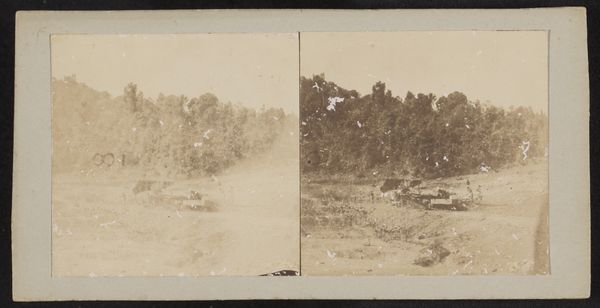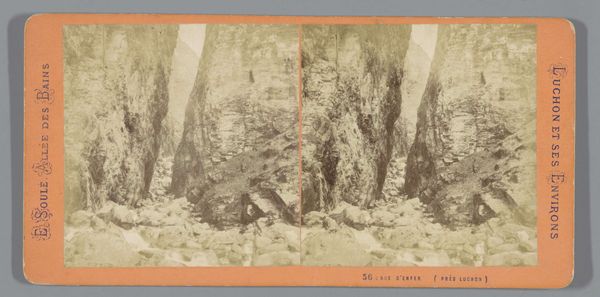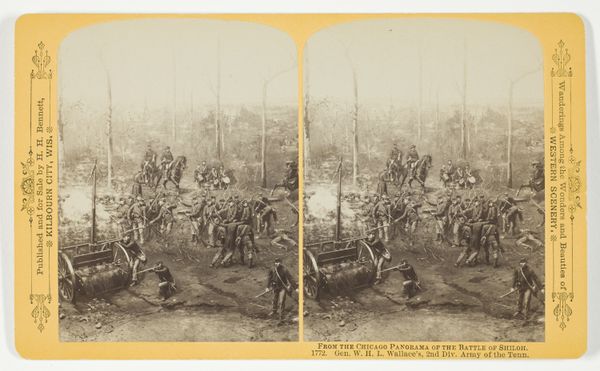
print, photography, gelatin-silver-print
# print
#
landscape
#
photography
#
gelatin-silver-print
#
history-painting
Dimensions: 10 × 7.5 cm (each image); 10.8 × 17.8 cm (card)
Copyright: Public Domain
Editor: This is "Capture of the Gun, Lady Breckinridge," a gelatin-silver print photograph by Henry Hamilton Bennett, taken in 1889. It depicts a battle scene and strikes me as both chaotic and meticulously composed, given the limits of photography at the time. What details stand out to you in terms of materials or processes? Curator: The gelatin-silver print is itself a fascinating artifact. Consider the socio-economic implications of photographic reproducibility in the late 19th century. How did the increased availability of images shape the public's perception of events like the Civil War? And look at the material quality; the paper, the developing chemicals - how do these contribute to the image’s presence, its ‘aura,’ if you will? Do you notice how the framing structures our experience of the depicted warfare? Editor: It’s interesting to think about the gelatin-silver print as a democratizing force, bringing war imagery to a wider audience, and, as a commodity. And the framing makes it like a stage. But, what do you make of the seemingly detached viewpoint? The viewer feels very removed from the carnage, despite its apparent proximity. Curator: Precisely. This ‘detachment’ can be viewed as a product of its time – an almost ethnographic gaze imposed upon a landscape scarred by industrial-scale conflict. The chemicals used to produce this image, and its widespread distribution, mirrors in some way the machinery and material impact of war itself, wouldn't you agree? It commodifies suffering and perhaps distances its viewers from ethical implications of historical record making. Editor: Yes, absolutely. Looking at it through that lens makes me rethink the intentions behind such a work. I came in with a straightforward aesthetic reading, but now, I realize how the processes of production and consumption are inextricably linked to its meaning and our understanding of history. Curator: Exactly, it’s crucial to question the supposedly transparent nature of photographs as historical records. Considering its production can illuminate complex networks of labor, technology, and ideology.
Comments
No comments
Be the first to comment and join the conversation on the ultimate creative platform.

